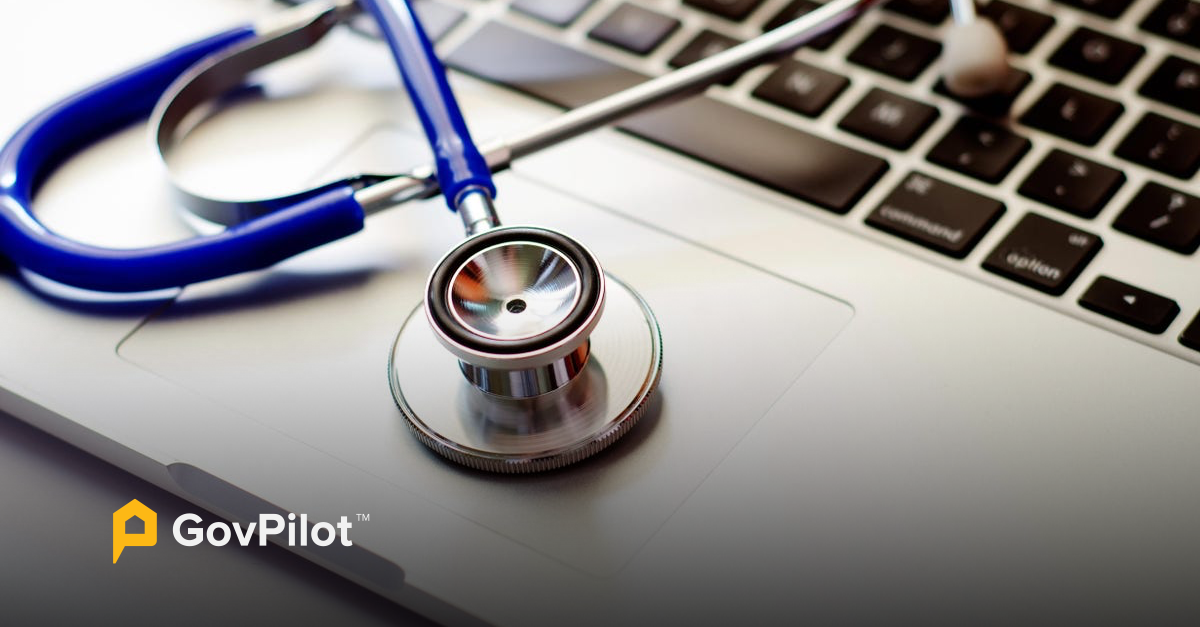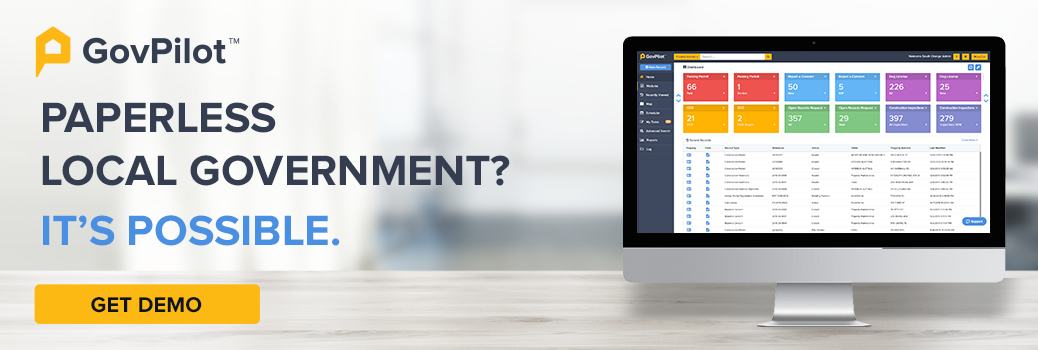If there’s a key takeaway from the COVID-19 pandemic, it’s how integral local public health departments are to public safety. The pressure is increasingly on for local health departments to ensure the public remains as safe as possible from health threats; from providing critical health data to citizens and key state and federal officials, to managing on-site vaccinations and testing, to recruitment of relevant health officials.
The pandemic also shined a spotlight on the key areas in need of innovation in health department workflows. Fortunately, technology and advancements in health services workflows are available for advancing your health department and local public health infrastructure.
Here are tips to consider when strategic planning as a local health leader, and ways that technology can advance your department workflows to be faster and better organized.
What are the Key Responsibilities of a Public Health Director?
Public health directors are decision-makers in local health departments that determine how to allocate budgets to provide critical health services within their jurisdiction. Beyond strategic planning, these directors ensure HIPPA standards, organize and oversee administrators, inspectors, tech workers, and other critical job roles involved in implementing public health services.
Tips for Public Health Directors to Innovate in the Health Department
If your local health department is still using all of the same workflows from before and during the pandemic, chances are your processes are antiquated and can be improved upon with government technology.
Here are key ways that public health directors can better plan and manage public health services:
How Can Public Health Directors Improve Strategic Planning Processes?
You’re the main decision maker about how budgets are to be allocated and which health services need to be prioritized.
Use hoards of health data collected and rapid health technology advancements in recent years, to make sure you’re implanting health department dollars as efficiently as possible on the highest priority issues.
1. Hear From Voices Across the Department
The success of your day to day health service operations is dependent on clerical, technical, and medical employees at various leadership levels.
Public health directors need to speak with health department officials across roles is critical to identifying bottlenecks in the current workflows and health infrastructure. Doing so will be further affirmation on the key issues to prioritize in coming quarters and years. When performing government employee performance reviews, be sure to inquire about what aspects of your department employees feel can be approved upon.
How Can Governments Improve Organization-Wide Communications? Here’s what to know.
2. Analyze Macro and Micro Level Health Data
International, Federal, state, and private sector health research has painted a clear picture about current public health priorities and challenges that became more evident at the height of the pandemic. Taking the time to assess data from all of these various resources will allow you to contextualize which issues pose the largest threats globally and the various strategies for fending off threats.
Use your local government analytics to make more localized decision-making around local health threats and services that matter most to public safety. Compare actual performance data of your health department against your key performance indicators to determine which focus areas would benefit from additional prioritization.
GovTip: Consider complaint management software to get insightful public health data right from your community-members. People can submit feedback & critiques about their experiences with getting vaccinated, accessing critical health department information, etc. for you to utilize when considering the public's perspective in your strategic planning. Here’s a resource for How to Best Use Complaint Management Software.
3. Assess Your Health Department Budget (and Consider Ways to Increase It)
Hopefully, city leaders like the city administrator in your community have come to recognize the critical importance in prioritizing the health department budget over the last few years. As a public health director, you need to adequately utilize the budget provided by your local government in ways that will have the most impact.
You also need to weigh your options for generating additional revenue for your local health department. Here are some common methods:
- Collect fees for applications: when businesses and citizens apply for things like pet licenses, health licenses, or health inspections, your health department is entitled to collect a government fee for performing the service.
- Collect fees for fines: When local businesses aren’t meeting health codes, they should incur fees for putting public health at risk. With various credit card processing integrations on GovPilot, you can collect government fee and fine payments right from your government website with online payments.
- Consider public health grants: federal and state governments are investing in local health infrastructure. Look into key grants that are available from federal bills like the American Rescue Plan and US Infrastructure Investments & Jobs Act as well as state grants like the NJDOH Public Health Infrastructure Grants to give your budget a much-needed boost.
Digital Infrastructure Tips for Public Health Directors to Consider
Using government technology across workflows is an effective way for public health directors to maximize their budgets. It’s a key reason that digital infrastructure is regularly highlighted in federal and state grants for local governments.
Here are key ways that you can use your budget to invest in health department software that saves time and money by automating workflows:
4. Digital Record Storage of Public Health Data
Government officials and citizens will have increased access to key government documentation by storing public records in the cloud. Existing documents from the health department can be uploaded to the government cloud, and all future documents will be automatically uploaded to the cloud and made accessible in real time.
Officials can track down health records in moments. Citizens can submit open records requests, manage public health data, and receive critical paperwork via an automated email. Critical paperwork can be distributed within the department, with other departments, with state and federal officials, and with private-sector partners via a streamlined government communications channel.
Learn more about the Benefits of Going Paperless in Local Government.
5. Health Permit and License Applications on Your Government Website
Customized forms for various permit and license types can be added right to your local government website. Generic health licenses as well as more specific license types like retail food establishment licenses can be submitted and approved virtually.
How Does Government Permitting Software Work? Here’s everything to know.
6. Digital Health Inspections
Make inspections more efficient by:
- Setting up automated scheduling notifications that let inspectors know when a new business is opening or an existing business needs a recurring health inspection.
- Health inspection forms can be moved to a digital format and filled in via a government mobile field device like a tablet or cell phone.
- Ensuring that all inspection records are automatically stored and accessible via the cloud.
7. Property Records via GIS Map
All property records for an address can be pulled up in moments via a local GIS map. Has a business previously failed a health inspection? Inspectors can refresh their memory to ensure code compliance is now being met. Have citizens and businesses applied for relevant permits and licenses? Health officials can check property records to confirm.
Learn more about the Benefits of GIS Maps in Local Governance.
8. Automated Collection of Data That Can Be Pulled Into Intuitive Reports & Dashboards
With all of your records stored in the government cloud, data is automatically being collected around things like
- Which types of forms are being regularly filed?
- How is revenue being generated for your health department?
- What are common reasons that local businesses are failing health inspections?
- How long is it taking to complete public health services?
- What are timelines looking like for public health infrastructure projects? Are they meeting anticipated deadlines?
Having all of this data at your fingertips will make it much easier to make informed decisions as a public health director.
Modern Public Health Director Strategy
Modern public health challenges require modern solutions. As a local leader in health service management, public health directors owe it to their citizens and staff alike to implement health department budgets in a way that makes processes more efficient and services stronger.
Health department digital infrastructure can transform every aspect of day to day operations for the better. Get started on implementing health software in your community by booking a free demo.
Public Health Director FAQs
What Does a Public Health Director Do?
A public health director is the main person in-charge of the local health department. They build quarterly and annual strategic plans, prioritize which health services budgets are allocated towards, and lead health officials that handle clerical, IT, and medical processes. Public health directors also consider the effects of pollutants in your community, specifically air pollution that impacts municipalities across America.
How Does Government Technology Help the Local Health Department?
Public health directors can get more out of their budgets by using GovTech to automate tedious workflows. Health department technology can be used to:
- Digitally store all public health records in the cloud.
- Record health inspections via a phone or tablet.
- Offer digital health permit and license applications.
- Collect insightful data about public health services.
- Collect digital fees and fines to generate revenue for your health department.
- Keep protected health information cyber secure to ensure your local health department keeps citizens' private data safe and doesn't have to pay fines or legal fees. HIPAA violation examples include having a government data breach as the result of a phishing scam or having government devices stolen.
- Incorporate health resources into your government website design. Provide information about kids, women's, and men's health online so constituents of all backgrounds have access to the information they need.
What Should Public Health Directors Consider When Strategic Planning?
Public health directors have a lot of variables to consider when choosing how to spend their annual budgets. Here are considerations to include in your strategic planning:
- Which issues are most important to your health department employees? Which hurdles are they facing in their responsibilities?
- How can health services be more equitable for constituents of all backgrounds?
- What trends are apparent in macro and micro level data?
- Where is revenue being generated? How can more be made to increase budgets?
Read on for the latest Government Trends & Technology Blogs:
- Local Government Code Enforcement Strategy
- Local Government Community Safety Strategy
- Managing Invasive Species at the Local Level
- How Can Local Governments Manage Population Shifts?
- Keeping Your Local Citizens Safe with E-Bike Regulations
- Local Government Fleet Management Strategy
- Local Government Water Utilities Strategy
- Managing and Improving Local Public Meetings
- Federal Cybersecurity Grants for Local Governments: Everything to Know
- Best Software for Government Procurement
- Municipal Planning: Reclaiming Your City Streets
- Government Fee & Fine Processing: Everything to Know
- Encouraging Civic Engagement at the Local Level
- Government Blockchain: How Local Government Can Use Crypto
- How Local Governments Can Encourage Civic Engagement
- BEAD Grants for Rural Broadband: What Local Governments Should Know
Sources










